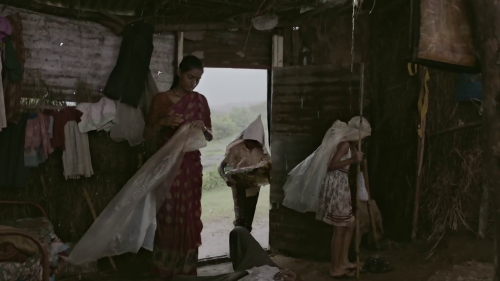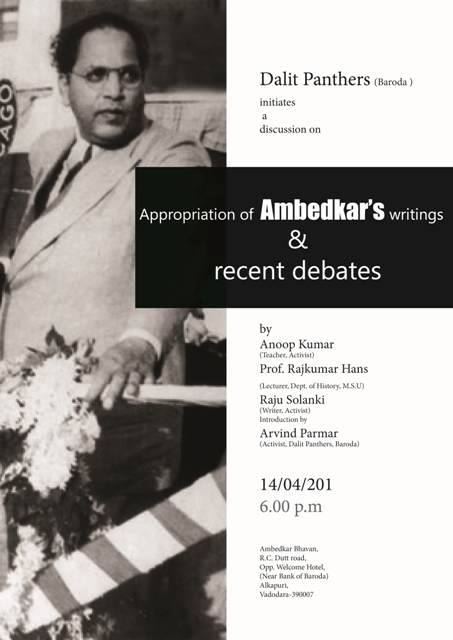JS Vinay
The Marathi short film Pavsacha Nibandh, literally meaning essay on/of the rain was released on Zee5, an OTT platform in the month of July. It is directed by Nagraj Manjule, who is known for his successful films with strong and assertive themes like Fandry and Sairat.
To begin with, I am not a regular film reviewer, so this write up is just about my own understanding of the film.
Pavsacha Nibandh is a tale of paradoxes. Nagraj is a masterful storyteller known for the dignity he provides to relationships in his films. The story begins with Raja (Meghraj Shinde), a small boy studying in a government school in a village in Maharashtra. The location shown most probably is from the Konkan region of the state. The school teacher, glorifying the concept of rain, gives homework to the entire class to write an essay on it. What happens after the school, how Raja struggles with the situations he faces and finds time despite them to write the essay forms the plot of the film.
Typically, most people romanticize the rains, but the rain is actually a great divider. It demarcates the people based on their privilege and shows the class/caste differences.
Raja’s family, mother Mangal (Gargi Kulkarni), younger sister Pari (Rahi Manjule) and drunkard father (Sheshraj Manjule) live in a small, leaking hut with no basic amenities like electricity. The rain water seeping in at various places in their hut accentuates their miseries. The family suffers a lot due to the rainst, as shown in various incidents in the film.
Let me share some aspects that really struck me:
- Everyone in the classroom has a proper school bag whereas Raja carries his books in a plastic bag and tries his best to cover his books to avoid drenching.
- He doesn’t have an umbrella, but when it rains he uses a plastic bag to cover himself.
- His younger sister tries to cover her drunkard father lying on the floor in the rains.
- The family doesn’t have enough money to cook meals nor enough food at home to be cooked. Raja is shown as extremely sensible when he helps his mother in all chores, agrees to starve for one time. He also willingly gives the only small kerosene lamp at home to his mother for cooking.
- The family is shown as very sensitive to animals, making sure they don’t get overly wet in the rains.
- Manjule expresses the irony of the situation in a subtle way when a foreign couple, all excited to visit a waterfall in such weather, asks the mother the way. The harried woman simply shoos them away, whereas Raja still helps them with directions politely in English , also showing him to be a sincere student.
- The use of aesthetics is simply admirable. For example, the family uses utensils of aluminum to cook as well as store dripping water. They use steel buckets at home. All these stuff are real aesthetics that you won’t normally find in mushy, city based typical movies.
- In the end, all the kids talk about the good things about the rain. Whereas that same stuff is misery for Raja and family. The kids talk about Raja’s family in their essays as if it is some form of entertainment. The joke is on us, as a society.
- The schoolgirl (whose mother refuses to pay money to Mangal) is seen describing the rains in a poetic way, in Brahminical Marathi.
- The climax in the classroom elevates the movie to another level, which I must not reveal as it would be a spoiler, but would definitely like to bring to your notice the moment when the camera zooms in on the picture of Savarkar.
- Manjule is known for thinking through about all the imagery used, as they make a political statement which we need to understand.
- The performances are top class with very few dialogues being spoken. Gargi as the harried mother plays the part with aplomb. Sheshraj has no dialogues but acts with full conviction as the drunkard man of the house. Pari plays the sweet, supporting daughter well.
- Raja carries the movie on his young shoulders. He shows steely determination as well as responsibility. Background music by Avinash Sonawane elevates the movie to another level and should not be missed. The sound of the dripping rain makes it a real experience.
The real hero or villain of the film (depending on how you view it) is the rain. Never has any other non-living thing been used with such finesse earlier. Manjule deserves all the credit. He makes us question all privileges, which could be as simple as having a house that doesn’t leak during the rains or having a normal meal a day. In many ways, he shows the lives of many Bahujans who suffer in tough environments and everyday is a survival. Make no mistake, this isn’t poverty porn but just a subtle way of showing a world that is very real for a lot of people. Manjule is a very strong visual storyteller who always believes in directing the gaze of audience, rather than spoon-feeding them with verbal exposition. That makes him stand out as a director.
And in the end when you see the credits rolling, you can see the rich diversity of the crew and cast.
The film is highly recommended for all. It will make you uncomfortable, just like all other feature films of Manjule. Watching it you may become more empathetic about it and understand smaller things in life which you take for granted.
With Pavsacha Nibandh, Manjule remarked, “Rains can be romantic only for those who are comfortably confined in their houses.”
~
This article was initially published on the website The Colourboard, but the website is no longer functional. Due consent has been taken from the the founders of the site before publishing it here.
~~~
JS Vinay is interested in the Anti-Caste movement, Food and Movies.
Picture courtesy: the internet.









